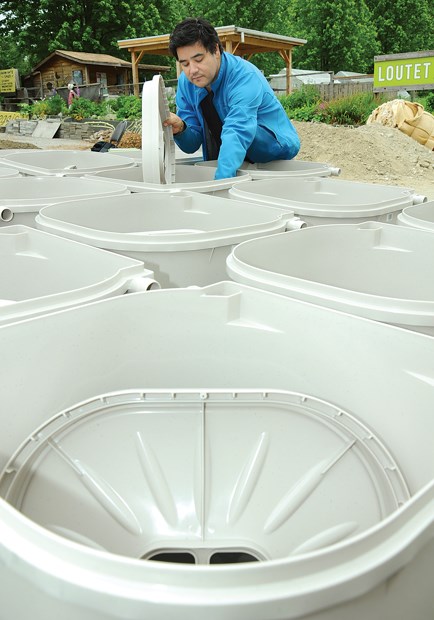Sitting in the back corner of the yard whirring away is a lonely sprinkler trying in vain to keep up with the drying weather of our seasonal drought.
By contrast in the neighbour's yard, a high pressure underground sprinkler system pulses out water at several litres a minute, showering the garden in glistening dew drops.
In still another yard down the street, the constant drip, drip of a soaker hose can be faintly heard underneath a hedge by the sidewalk.
By comparison to those sounds, a couple thousand kilometres south in California, the multiyear drought is forcing tough choices on everyone. Farmers are ploughing under farm fields to make fallow for lack of water. Homeowners are filling in swimming pools to grow plants and replacing lawns with desert plants. Many Californian cities are prohibiting the installation of lawns for new residential developments and offering incentives to convert existing lawns to drought-tolerant plants.
The Interior of B.C. is also facing water supply pressures caused by population growth and natural resource extraction that demands more water from finite resources. Water is not always abundant when and where people need it, hence the need for summer watering restrictions which began on June 1 in the Metro Vancouver region.
According to Metro Vancouver, more than one billion litres of water is supplied every day to the 23 communities that comprise the region. Our water is collected from
rainfall, snowmelt and streams in the mountains of the Capilano, Seymour, and Coquitlam watersheds. Water from those reservoirs is then cleaned of harmful organisms and piped and pumped to homes and businesses. Our water supply system is one of the best in the world, but it has limitations, especially during peak demand from June to September.
I think it's important to note that watering restrictions currently apply to lawns only. Gardens, veggies and trees are exempt. As a matter of fact, our watering restrictions were originally started to conserve water excessively applied to the region's lawns.
Lawn sprinkling regulations are in effect from June 1 to Sept. 30 and they apply to all residential and non-residential users in the Metro region. Residents can water on alternating days depending on their street address. Residential watering can occur between 4 a.m. and 9 a.m. on appropriate days. Non-residential watering can occur between 1 a.m. and 6 a.m. on certain days based on address, as well as Fridays between 4 a.m. and 9 a.m. Since I have no grass to water I water in the evening for one simple reason, it's when I am home and have time to water. I have never agreed with telling people to water between 1 a.m. and 6 a.m. in the morning. Who gets up that early to water?
Watering of garden plants and veggies can be done in the evening without cause for bylaw infraction or increasing plant disease. While it is true that a few plants will have increased incidence of disease if watered in the evening, people have taken such knowledge and applied it universally to all watering, which is quite simply wrong.
I would like to tell everyone how to water their lawns efficiently and sustainably, but I simply don't care if every last bit of lawn grass in Canada dries up and blows away, or at least goes dormant for summer. But when it comes to keeping trees, gardens and veggies watered, here are two effective and sustainable techniques to lessen watering requirements in the garden.
Dig deep: Yes I know that's easier to say than to do, but dig you must, and dig deeply if you want to provide optimum growing conditions for your plants over the long-term. When planting new plants, dig twice as wide and deep as the size of pot you are planting. Amend the volume of the planting hole by 30-50 per cent with soil amender, compost or animal manure - never mushroom. Use any excess soil to build a watering dam/bowl on the soil's surface around the plant to collect and hold water from irrigation or rainfall.
Mulch forever: The more mulch the better; there is no downside to mulching unless you bury perennial plant crowns. Never use the hideous ground cloth or landscape fabric, just nude mulch. Mulch can be anything organic that decomposes slowly and is more woody than soily. Mulch should be applied eight to 10-centimetres deep over the entire planting bed and up close to the base of all plants. Good mulches include: bark, mixed or straight Douglas fir; bark chips (a little 1970s but still nice); composted bark (the dark brown version of regular bark); wood chips from arborist operations but not walnut or cedar, peat moss, only on dry or rocky soils; leaves from any garden tree that is not diseased (shredded preferably but whole is nice too); and shredded plant stalks and stems. And remember - mulch is the canvas upon which the garden is painted.
Email [email protected]



